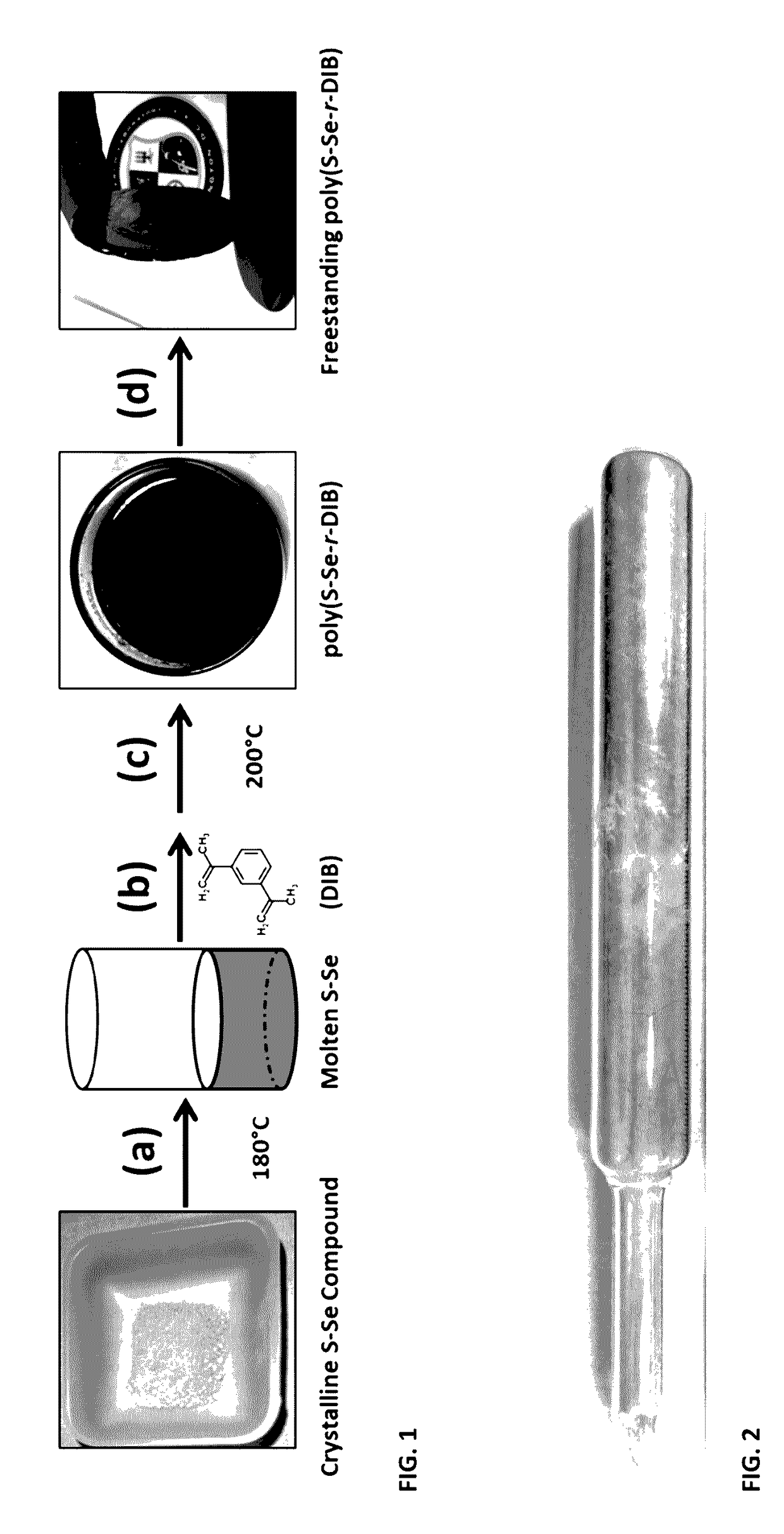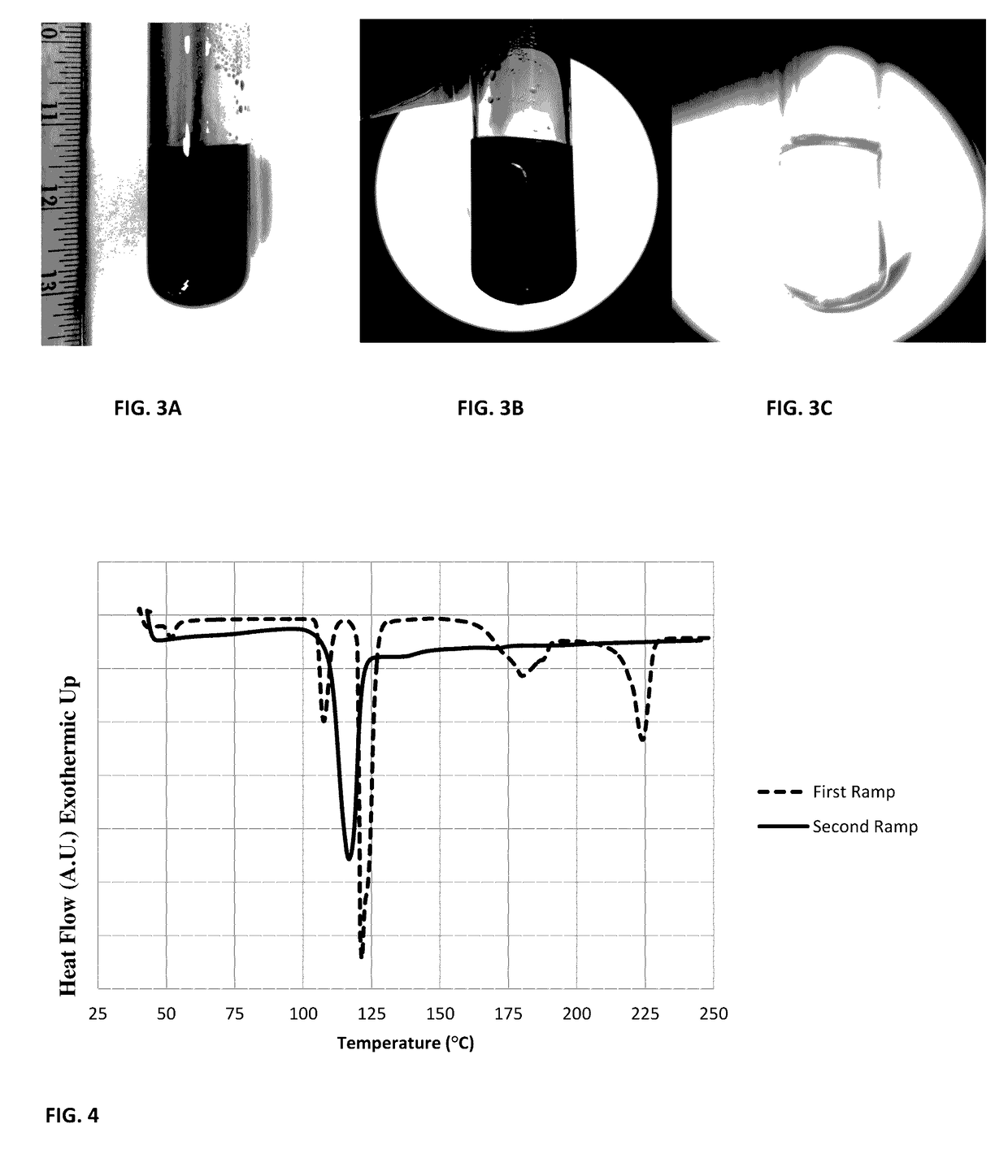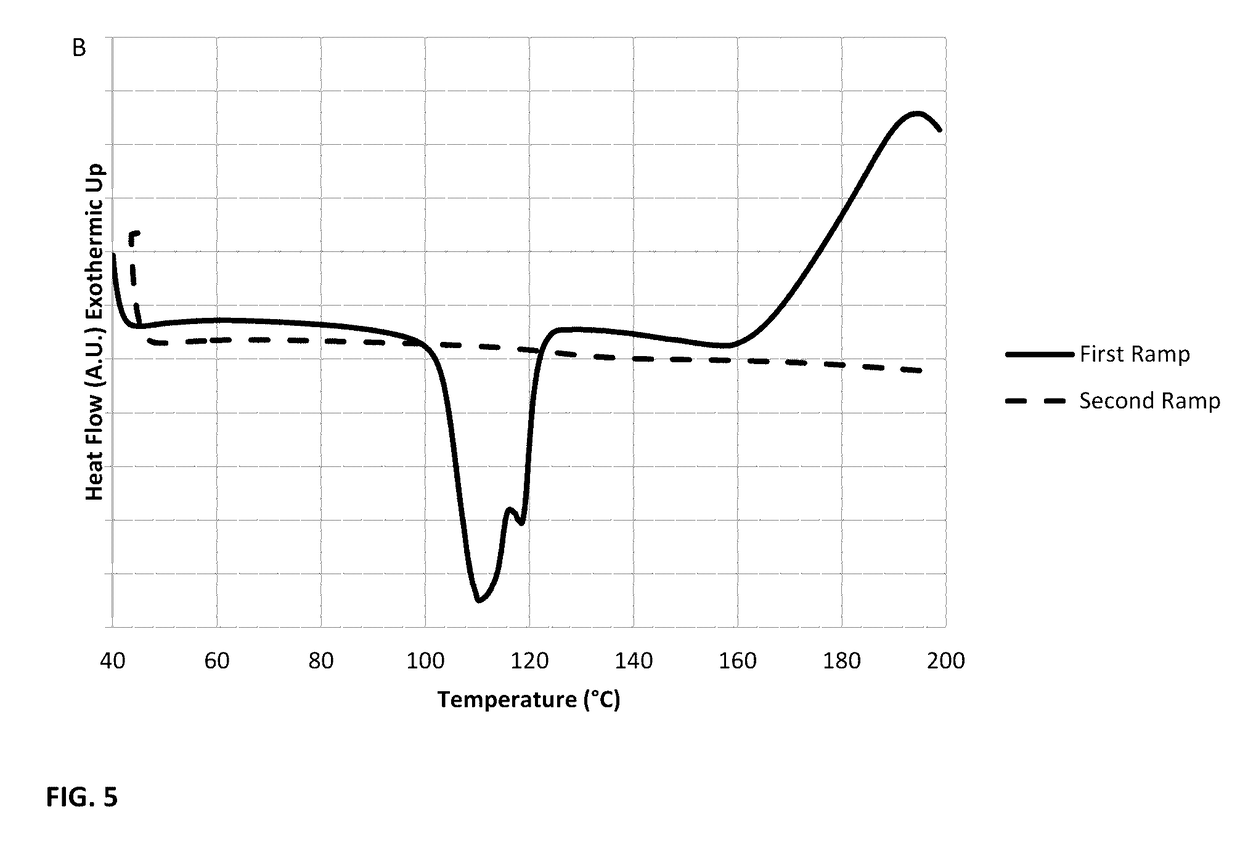Organically modified multicomponent chalcogenide polymers
- Summary
- Abstract
- Description
- Claims
- Application Information
AI Technical Summary
Benefits of technology
Problems solved by technology
Method used
Image
Examples
example 1
[0032]This example details the synthesis of an S98Se2 compound and then the subsequent addition of 1,3-diisopropenylbenzene (DIB) to form a stable sulfur / selenium polymer, using the ampoule synthesis method. The subscripts represent the atomic percentage of sulfur and selenium in the precursor compound. Four times distilled sulfur (95 grams) and selenium (5 grams) precursors were used to constitute a compound S98Se2 at % composition. The precursors were loaded in a 1 inch inner diameter silica ampoule placed under an inert nitrogen gas atmosphere. The ampoule containing the precursors was connected to a vacuum pump and evacuated for 3 hours at 1×10−5 Torr. The ampoule was then sealed using a methane / oxygen torch and placed inside a rocking furnace. The furnace was slowly heated from 20° C. (room temperature) to 400° C. and held constant at 400° C. for 2 hours to form a melt, while the furnace was rocked to facilitate mixing and homogenization of the S and Se elemental components. Ne...
example 2
[0036]This example illustrates the use of differential scanning calorimetry (DSC) to analyze the reaction of sulfur and selenium precursors to form an S79Se21 crystalline compound. In FIG. 4, a DSC plot is given for the formation of the S79Se21 compound with the absence of a crosslinking moiety. This sample was prepared by adding 11.6 mg of sulfur with 7.4 mg of selenium in a hermetically-sealed pan. The sample was heated to 250° C. at 10° C. per minute, cooled to 40° C. at 5° C. per minute, then heated again to 250° C. at 10° C. per minute. The heat flow vs. temperature plot shown in FIG. 4 has endotherm peaks characteristic of crystalline sulfur and selenium during the first heating ramp, indicated by the dashed line. The endotherm at 100° C. is associated with a phase transition for crystalline sulfur from the α>β phase. The transition of crystalline sulfur to liquid is given by the endotherm near 120° C. Beyond the liquid transformation the sulfur rings have opened, and they beg...
example 3
[0037]This example illustrates the use of differential scanning calorimetry (DSC) to analyze crosslinking of an S98Se2compound with DIB to form a polymer. In FIG. 5, a DSC curve is given for the characteristic polymerization process when the crosslinking moiety 1,3-diisopropenylbenzene (DIB) was added to an S98Se2 crystalline. The S98Se2 compound was formed in the manner described in example 2. Here the peaks characteristic of phase transition and ring opening, as discussed, were observed on the first heating stage, solid curve. The DIB then reacts at high temperature with the S98Se2 compound. The rings are open and stabilized upon cooling down. The second heating curve, dashed line, is now indicative of the S98Se2 stable polymer and therefore no phase transition and ring opening is observed as indicated by the absence of peaks. This example illustrates the stable polymerization of the S98Se2 compound which is formed by the addition of DIB.
PUM
 Login to View More
Login to View More Abstract
Description
Claims
Application Information
 Login to View More
Login to View More - R&D
- Intellectual Property
- Life Sciences
- Materials
- Tech Scout
- Unparalleled Data Quality
- Higher Quality Content
- 60% Fewer Hallucinations
Browse by: Latest US Patents, China's latest patents, Technical Efficacy Thesaurus, Application Domain, Technology Topic, Popular Technical Reports.
© 2025 PatSnap. All rights reserved.Legal|Privacy policy|Modern Slavery Act Transparency Statement|Sitemap|About US| Contact US: help@patsnap.com



